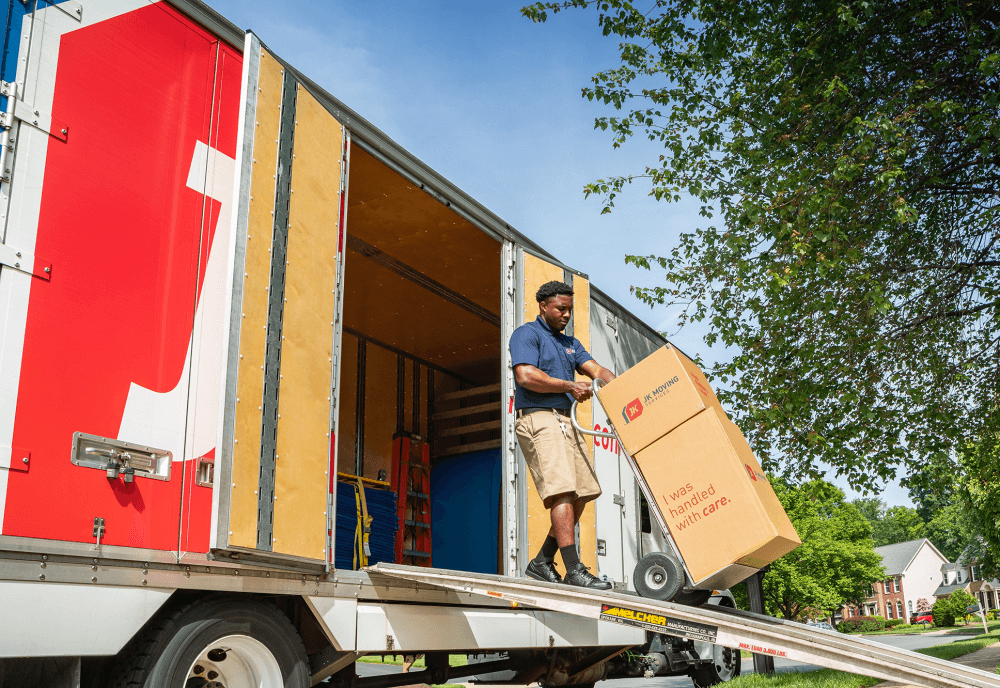Movers That Pack For You: Professional Relocation Experts Can Assist Make Your Shift Smooth And Trouble-free
History and Advancement of Moving Solutions
The Dawn of Moving: From Muscle to Machines
Picture this: a handful of strong males hauling heavy trunks on wooden carts, navigating cobblestone streets with sweat and decision. Before the modern moving industry took shape, moving was a harsh, labor-intensive job. In ancient times, moving frequently indicated counting on sheer physical strength and simple tools. The absence of specialized services indicated families and merchants needed to coordinate every information themselves, often running the risk of damage or loss.
Isn't it interesting how necessity fuels innovation? As cities broadened and commerce grew, the requirement for efficient, reliable moving services ended up being glaringly apparent. Go into the period of horse-drawn wagons and later, motorized vehicles, which revolutionized how belongings traveled from one location to another.
Industrial Transformation: The Driver for Change
The 19th century's commercial boom reshaped many facets of life, including how people moved. All of a sudden, urban migration rose, and with it, the need for professional movers skyrocketed. No longer was moving an easy task; it progressed into a customized service offering:
- Packing competence to protect delicate products
- Organized filling strategies maximizing space
- Transportation solutions tailored to different distances
This duration marked the birth of companies committed solely to moving, preparing for today's complex logistics and customer-centric methods.
Technological Developments and Their Impact
Can you imagine moving without modern equipment? The advent of hydraulic lifts, forklifts, and pallet jacks changed the market over night. Unexpectedly, movers could deal with bulky furnishings and heavy devices with ease, minimizing injuries and improving effectiveness.
The integration of digital technology sparked here a brand-new wave of development. GPS tracking, online reservation platforms, and real-time stock management have actually ended up being staples in the moving services landscape. These tools not just boost openness but also empower clients to stay linked and notified throughout their moving journey.
Key Turning Points in Moving Solutions Advancement
| Era | Advancement | Significance |
|---|---|---|
| Ancient Times | Manual labor and standard carts | Foundation of moving as a need |
| 19th Century | Horse-drawn wagons and packaging services | Birth of expert moving business |
| 20th Century | Motorized trucks and mechanized equipment | Increased efficiency and scale |
| 21st Century | Digital combination and GPS innovation | Boosted consumer experience and logistics |
Reflections on the Journey
Reflecting on the advancement of movers, one might question: how did an easy act of transferring possessions become a sophisticated industry? It's a tale of strength, adjustment, and continuous improvement. From the sweat-soaked streets of old to the precision-driven operations these days, the history of moving services is as vibrant as individuals who depend on them.
Next time you pack a box or work with a mover, think about the layers of history embedded in every action. The journey of movers encapsulates human ingenuity, changing what was as soon as a daunting job into a seamless experience.
Exploring the Spectrum of Moving Services
When the time concerns shift your life from one address to another, the variety of moving services readily available can seem like browsing a labyrinth. Do you require a basic loading and discharging team, or does your relocation demand the skill of full packaging and unpacking? Comprehending the subtleties can conserve hours of aggravation and unforeseen costs.
Typical Types of Moving Providers
- Regional Relocations: Designed for relocations within a city or city, these services normally operate on a per hour basis, perfect for short distances.
- Long-Distance Relocations: Covering moves beyond 100 miles, these require more coordination, from logistical preparation to protect transport, typically priced by weight and range.
- Full-Service Relocations: Movers deal with whatever-- packaging, loading, transporting, discharging, and often even unpacking. Suitable for those pressed for time or energy.
- Self-Service Moves: You load and fill your personal belongings, while the business handles transport and dumping. A happy medium offering cost savings and some convenience.
- Specialized Relocations: For fragile, bulky, or important items like pianos, antiques, or art work, needing specific devices and knowledge.
Professional Tips to Navigate Your Moving Service Choices
- Prioritize Versatility: Choose a service that adjusts to unanticipated hold-ups or last-minute modifications-- stiff schedules can turn a smooth relocation into a logistical headache.
- Check Insurance Coverage Options: Not all moving companies provide the very same level of defense. Understanding your coverage can avoid distress if something goes awry.
- Demand In-depth Stocks: An accurate item list prevents conflicts and makes sure responsibility, especially when dealing with long-distance or specialty moves.
- Consider Time of Year: Seasonal demand can impact availability and rates. Early booking during off-peak seasons might approve better service and flexibility.
- Inquire About Packing Materials: Premium boxes, bubble wrap, and cushioning can be the difference in between a scratched heirloom and a beautiful arrival.
Table: Service Characteristic Compared
| Service Type | Who Packs? | Transportation Mode | Common Rates Design | Ideal For |
|---|---|---|---|---|
| Regional Move | Customer or Movers | Truck | Hourly | Brief ranges, little loads |
| Long-Distance Move | Movers | Truck or Container | Weight & & Range | Cross-state or local relocation |
| Full-Service Move | Movers | Truck | Flat or Weight-Based | Time-sensitive, high-stress moves |
| Self-Service Move | Consumer | Truck or Container | Flat or Hourly | Cost-conscious, hands-on movers |
| Specialized Move | Movers with competence | Specialized Devices | Custom-made Quote | Fragile or important items |
The Unseen Complexity Behind Each Choice
Have you ever wondered why moving appears effortless on television however develops into a waterfall of last-minute choices in real life? The reality depends on the intricacies of each service type. Full-service moves might seem like a high-end, however the competence included in packaging delicate heirlooms or taking apart bulky furniture is a craft honed over years. Deciding for a self-service move might save money, but it demands an eager understanding of how to pack effectively-- did you know that stacking oddly shaped boxes improperly can cause internal shifting during transit, wrecking delicate contents?
Picking the right kind of moving service is not practically benefit-- it has to do with safeguarding your memories and financial investments. What's your move's story going to be?

Packing and Moving Strategies
Ever attempted to fit a luggage that simply won't close? That's the sort of puzzle professional movers fix daily-- but on a much bigger scale. The secret lies not in brute force however in strategic placement and intelligent usage of space. Packaging isn't simply about stuffing items into boxes; it's an art form where every inch counts.
Layering for Success
Envision a painter layering colors to produce depth. When packing, start with heavier products at the bottom, then cushion with softer products like bubble wrap or towels. This prevents damage and maximizes box stability. Oddly formed items can slip into gaps, lowering wasted area.
- Wrap delicate products separately with tissue or foam to avoid scratches.
- Use clothing as padding-- it's both effective and environment-friendly.
- Fill empty spaces with packing peanuts or crumpled paper to reduce motion.
Labeling: The Unsung Hero

What great is best packing if you invest hours rummaging through boxes? Comprehensive labeling is a game-changer. Rather of vague tags like "Cooking area," try this technique:
| Label | Description | Concern |
|---|---|---|
| Vulnerable - Glasses | Handle with care, contains fragile items | High |
| Basics - Very First Night | Items required right away after moving | Immediate |
| Books - Research Study Space | Stacked, heavy books | Medium |
Strategic Packaging Tips
- Dismantle big furniture and keep screws in labeled bags taped to the pieces.
- Usage uniform box sizes when possible-- stacking ends up being simpler and much safer.
- Do not overpack boxes; weight limits exist for a reason. Go for 40-50 pounds max.
- Wrap furnishings edges with moving blankets to avoid scratches throughout transit.
- Seal boxes with top quality packing tape-- double layers on the bottom are necessary.
Why do some movers swear by a color-coded system? Because it eliminates guesswork on moving day. Appoint each space a color and mark boxes accordingly. This small action can conserve hours when unloading and unloading.
Packaging and moving need accuracy-- like a chess game where every move counts. Have you ever saw how some movers deal with large items easily? They utilize angles and pivot indicate navigate tight corners without damage. It's not muscle; it's method.
Unseen Struggles Behind the Moving Van Doors
Ever seen a team of professional movers bring a grand piano through a narrow doorway and questioned how they pull it off without a scratch? The art of moving isn't simply muscle and trucks; it's a delicate dance with unpredictability. Weather condition can flip from a sunlit blessing to a torrential threat in minutes, turning an uncomplicated drive into a logistical labyrinth.
One notorious obstacle is the labyrinthine layout of some homes or apartments. Staircases too tight for dollies, entrances narrower than standard boxes, or elevators that barely fit a sofa-- these physical quirks require inventive options on the area. Movers frequently resort to unconventional strategies like disassembling furniture or using custom-made cushioning to protect both the item and the residential or commercial property.
Accuracy Packing: More Than Just Covering
It's tempting to believe packing is merely packing boxes, but the truth is a complicated puzzle of weight circulation and fragility. Movers need to prepare for how items will move during transit-- a mistake can indicate shattered heirlooms or dinged up devices. The trump card? Strategic layering and utilizing products with specific shock-absorbing qualities.
- Bubble wrap is basic, however alternating it with foam sheets can dramatically reduce impact damage.
- Heavy items go at the bottom; fragile ones nestle on top, cushioned by soft textiles.
- Identifying boxes not just by contents but by dealing with directions makes sure quicker, safer discharging.
Another less spoke about strain is the psychological toll. The clock ticks non-stop, and every hold-up ripples through tight schedules. Staying calm amid disorderly last-minute changes needs imagination and group synergy.
Traffic Jams and Timing: The Unnoticeable Challengers
| Obstacle | Professional Method | Impact |
|---|---|---|
| Urban congestion | Route optimization apps and versatile scheduling | Lessens hold-ups and fuel usage |
| Parking restrictions | Pre-arranged permits or tactical parking close by | Avoids fines and time loss |
| Unforeseeable weather condition | Waterproof coverings and contingency strategies | Preserves the condition of products and equipment |
Do you actually understand what it takes to keep a moving day on track? It's not just about strength or endurance; it's about foresight, adaptability, and a deep understanding of every piece of the puzzle. The next time you see movers at work, remember: behind that smooth operation lies a series of determined maneuvers and fast thinking that few ever notification.